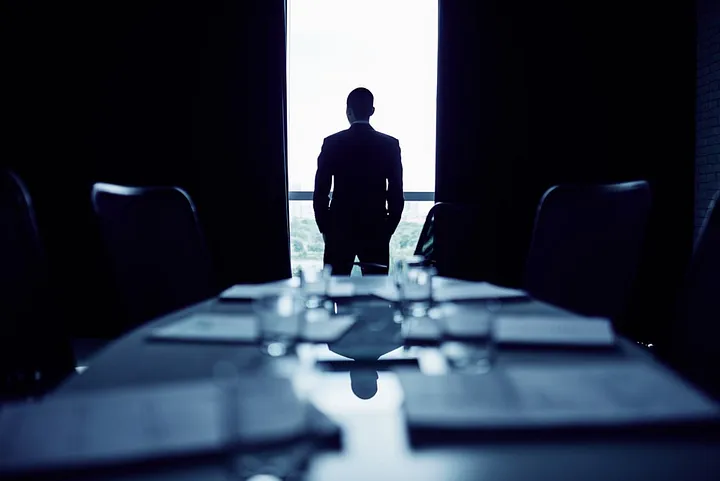With the new age of business interaction and dealings, CEOs are expected to be accessible around the clock, responding to emails, attending meetings, managing crises, and constantly interacting with stakeholders.
But what if the very thing that drives much of their performance—constant availability—is also what undermines their clarity and effectiveness? As counterintuitive as it may seem, one of the most underrated yet powerful tools in a CEO’s leadership toolkit is intentional solitude.
Alone time, used wisely, has the potential to enhance strategic clarity, boost creativity, sharpen decision-making, build emotional resilience, and reconnect leaders with their purpose.
This is not about isolation, detachment, or escapism; it’s about carving space to think, reflect, and lead deliberately.
1. Strategic Clarity: Seeing the Bigger Picture
One of the defining responsibilities of a CEO is to maintain a clear, long-term vision for the organization. But this is a task that’s increasingly difficult amid the noise of back-to-back meetings, urgent emails, and constant demands for their attention.
In a seminal study conducted by Harvard Business School professors Michael E. Porter and Nitin Nohria, CEOs from large global companies were shadowed for months to observe how they spent their time.
The results were surprising: only 3% of their time was spent on strategic thinking, while over 70% went toward day-to-day operations and internal communications. When a leader is constantly reacting, they lose the ability to proactively shape the future.
Alone time offers the necessary distance to evaluate not just what’s happening, but why, and whether it aligns with the broader mission. During such periods of quiet, leaders can step back, reassess business models, reconsider company direction, and reconnect with the long-range vision.
Bill Gates exemplifies this principle through his “Think Weeks”—seven-day retreats where he isolates himself with books, memos, and strategic questions. These retreats have sparked several of Microsoft’s major innovations, such as the conception of Internet Explorer. Gates understood that high-leverage thinking requires space, silence, and reflection.

2. Enhanced Decision-Making: Reducing Noise and Emotional Reactivity
In leadership, decision-making is everything. Yet under pressure, even the most intelligent leaders can make flawed choices, particularly when emotions run high or information overload clouds judgment. This is where solitude becomes a cognitive advantage.
Nobel laureate Daniel Kahneman, in his book Thinking, Fast and Slow, distinguishes between two modes of thinking: fast (impulsive, intuitive) and slow (deliberate, reflective).
CEOs, surrounded by urgency, are often trapped in fast thinking. Alone time offers the opportunity for the slow, intentional thought that complex decisions demand.
Moreover, the brain’s Default Mode Network (DMN)—which is active during rest and reflection—enables deep cognitive functions such as self-awareness, future planning, and moral reasoning.
Neuroscientists have found that activating the DMN through solitude can lead to more ethical and future-oriented decisions, helping leaders consider the long-term impacts of their actions.
Without these moments of introspection, CEOs are more susceptible to short-term pressures, board politics, or reactive thinking.
Instead of responding immediately to every issue, leaders who engage in regular solo reflection can weigh risks and options more effectively.
Many CEOs develop a habit of taking 15–30 minutes at the end of each day to process key decisions, review upcoming ones, and evaluate how closely their actions are aligned with company values.
This brief, daily solitude helps prevent regret, maintain integrity, and reduce decision fatigue.
3. Creativity and Innovation: Solitude as a Spark for Breakthrough Thinking
The myth of the “creative genius in the crowd” is overstated. Most creative insights don’t come during brainstorming meetings—they arise during walks, showers, or quiet moments of thought.
Studies from the University of California, Santa Barbara show that insight-based problem solving is most likely to occur when the brain is at rest or wandering.
This kind of unconscious synthesis—the connection of disparate ideas—is precisely what fuels innovation, and it thrives in solitude.
Solitude gives the mind permission to explore, imagine, and experiment without the fear of judgment or interruption. It allows leaders to question assumptions, ask “what if?” scenarios, and reframe problems from new angles.
Steve Jobs was famously known to walk alone for hours when wrestling with big decisions or looking for new ideas. These solo walks became a ritual for ideation, and many of Apple’s iconic innovations were reportedly born during such moments.
Creative solitude is especially important for CEOs in fast-changing industries like technology, media, or finance. When the external environment is volatile, leaders need time away from the noise to develop adaptive strategies. Some CEOs even schedule “white space” in their calendars—unstructured time devoted to open-ended thinking. This space, although seemingly unproductive on the surface, is often where breakthrough ideas emerge.
4. Emotional Regulation and Mental Resilience
The emotional weight of being a CEO is often underestimated. From handling layoffs and PR crises to making difficult trade-offs, the psychological demands can be immense. According to a Harvard Business Review survey, 50% of CEOs report feeling lonely in their role, and 61% believe it negatively affects their performance. The pressure to appear confident and decisive can create emotional bottlenecks that, over time, lead to burnout, fatigue, or impulsive behavior.
Solitude provides an essential opportunity for emotional processing. Alone time allows leaders to pause and ask: “How am I feeling? What am I carrying from today? What did I avoid or suppress?” Research from the University of Rochester found that even 15 minutes of quiet time daily can significantly reduce cortisol (the stress hormone), enhance self-awareness, and promote emotional balance.
Mindful solitude—especially when paired with journaling or meditative reflection—can also help leaders identify patterns in their reactions and decision-making. They become more aware of emotional triggers, personal biases, and habitual stress responses. This self-awareness fosters emotional intelligence, which is strongly correlated with leadership effectiveness. CEOs who are emotionally regulated are better at leading under pressure, empathizing with others, and avoiding destructive behaviors.
5. Reconnecting With Purpose and Values
Over time, the day-to-day grind of leadership can obscure a CEO’s original purpose. Founders, especially, can lose touch with the mission that once drove them, becoming entangled in administrative burdens, investor expectations, and short-term targets. Without regular pauses for reflection, it’s easy for a leader to drift—intentionally or not—into misalignment with the company’s values.
Alone time is a vehicle for realignment. It allows leaders to revisit their “why”: Why did I start this company? Why does this work matter? Why do people follow me?
Leaders like Howard Schultz, former CEO of Starbucks, have spoken openly about the need to retreat and reflect during turbulent times. Schultz used solitary journaling and reflective walks to return to his core purpose of building a values-driven company focused on community and connection.
Purpose isn’t just a feel-good concept—it has direct business implications. Purpose-driven companies outperform the market, and purpose-driven leaders inspire more committed teams. In a fast-moving corporate world, the CEO must serve as the steward of that purpose. Solitude ensures they can protect it from erosion.
6. Addressing the Reality of CEO Loneliness
There’s a difference between solitude and loneliness—but many CEOs experience both. The top position is inherently isolating. Decisions are weighty, trust must be earned carefully, and internal relationships often come with political complications. Harvard Business School’s recent research indicates that loneliness among CEOs is not only widespread but also dangerous to company performance. CEOs who feel isolated are more likely to avoid tough decisions, become emotionally withdrawn, or micromanage their teams out of insecurity.
Yet when loneliness is transformed into intentional solitude, it becomes a source of strength rather than weakness.
CEOs who consciously take time alone to recharge are more capable of handling interpersonal complexities and leading with authenticity.
Moreover, solitude helps leaders manage their identity—the often-overlooked inner life that determines whether their external role matches their internal sense of self.
Having a strong inner life also makes it easier to resist external pressures, such as fads, investor impatience, or competitive mimicry.
The CEO who is comfortable being alone is also more likely to be original, ethical, and grounded in their convictions.
7. Implementing Solitude: How CEOs Can Create Space Without Losing Touch
The question, then, is not whether solitude is valuable—but how CEOs can realistically make room for it. The most successful leaders don’t leave alone time to chance.
They schedule it, protect it, and treat it as sacred. Here are some practical strategies that CEOs can apply:
First, they can begin the day with silent mornings—30 to 60 minutes of uninterrupted time before emails and meetings begin. This can be used for reading, journaling, or simply thinking.
Second, leaders can replace some 1:1 meetings or calls with solo walking sessions, giving the brain time to process and imagine freely. Third, many executives find value in weekly strategy hours, deliberately blocked on the calendar, during which no operational issues are addressed. The focus is purely on long-term reflection.
More ambitious approaches include quarterly think days or personal retreats, where CEOs step away from their typical environment and immerse themselves in strategic, creative, or philosophical inquiry. Some leaders go off-grid for these days, leaving phones and laptops behind.
Lastly, keeping a leadership journal—where thoughts, doubts, victories, and questions are recorded—can become a powerful tool for tracking growth and clarifying intent.
These practices need not be rigid. What matters is consistency. The CEO who consistently prioritizes solitude builds the habit of inner leadership—the kind that doesn’t depend on chaos to feel productive.
Solitude as a Leadership Multiplier
Leadership today demands more than charisma and execution—it demands clarity, resilience, and vision. In a role where attention is relentlessly divided, alone time is not a luxury—it is a leadership multiplier.
It creates the space for strategic thinking, supports ethical decision-making, sparks innovation, preserves emotional energy, and reconnects leaders with their deepest values.
The CEOs who embrace solitude aren’t stepping back—they’re stepping above the operational noise to lead from a place of integrity and perspective. They are the ones who can see not just the next quarter, but the next decade.
In solitude, they become not just better leaders, but more authentic, human ones.

